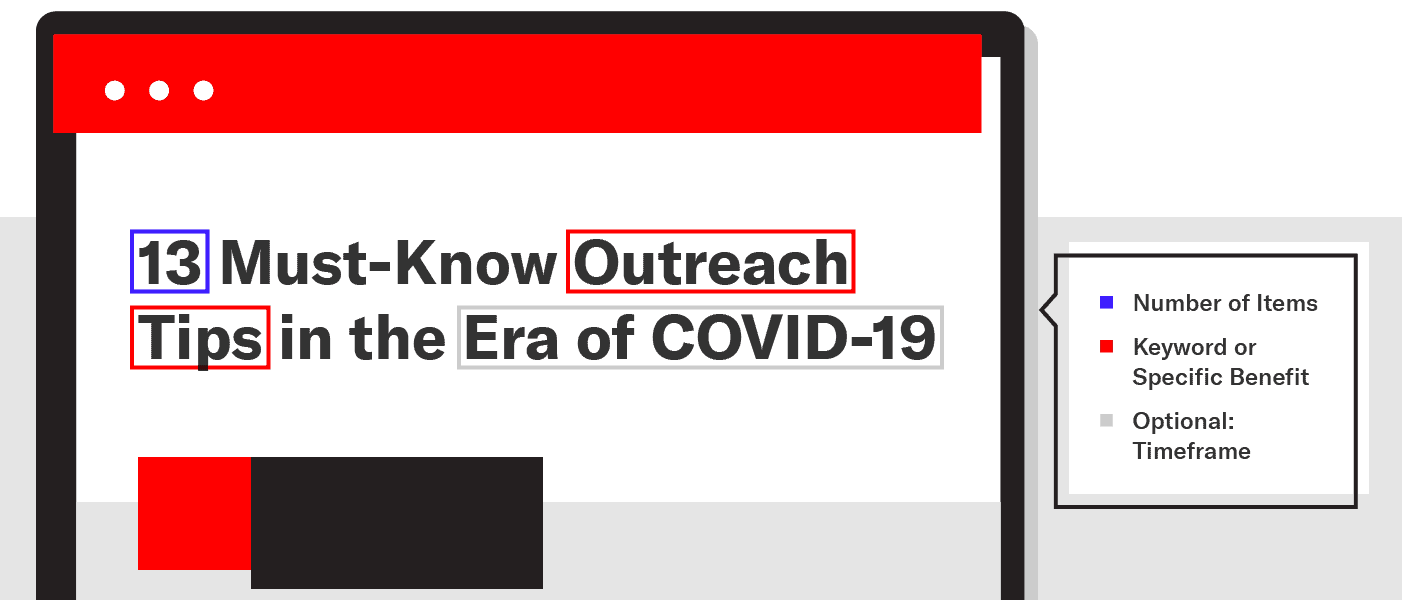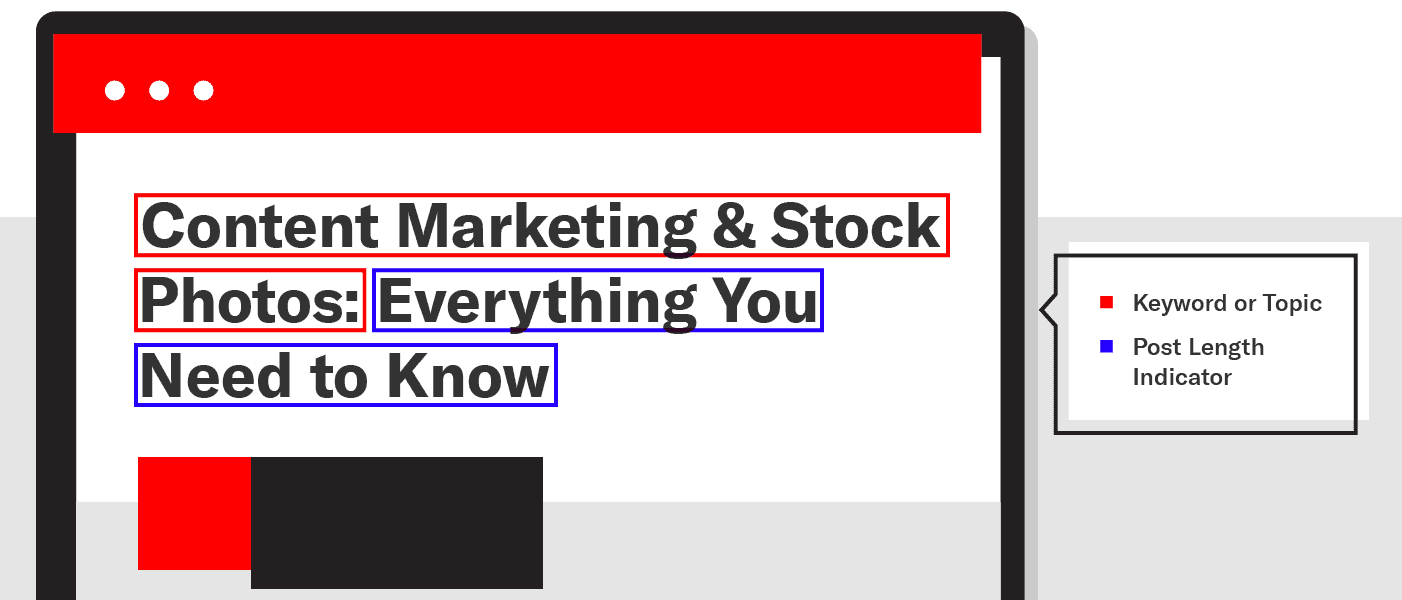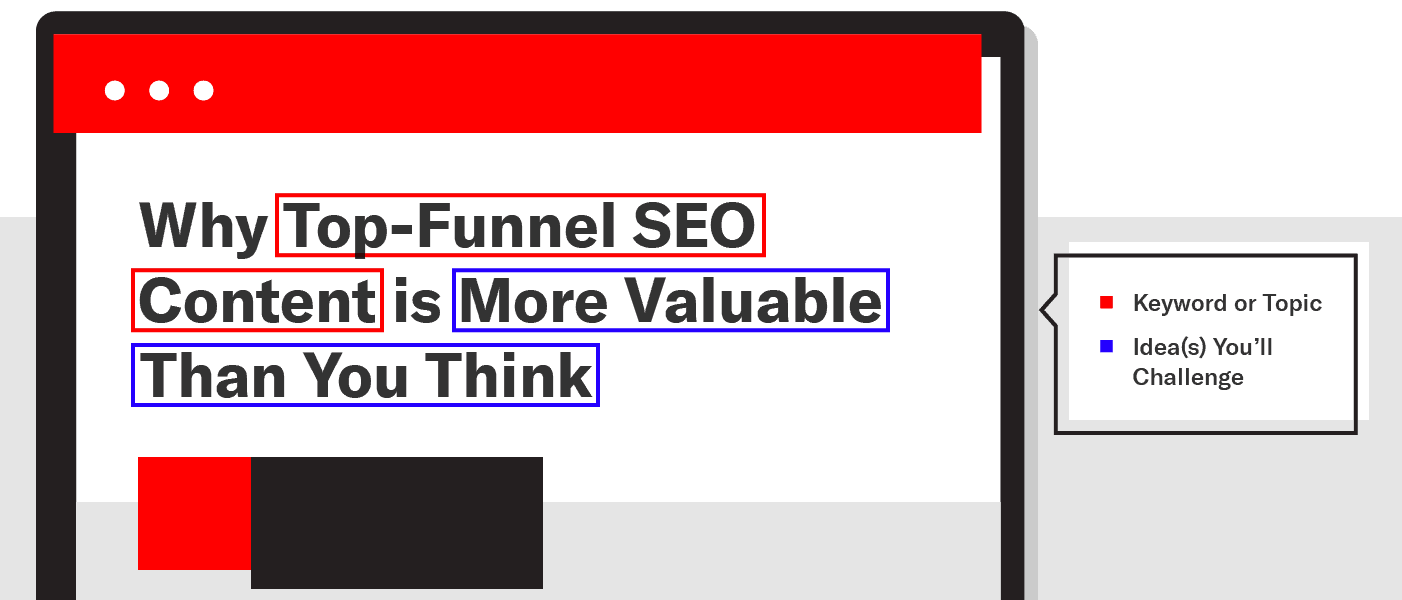It doesn’t matter how great your content is if no one clicks on it—and it all starts with your blog title.
Stuck on how to come up with a good title? I don’t blame you. A blog title is the first, and sometimes only, to draw your readers in.
A great blog title sets the expectation for the content within your post, but also helps create a curiosity gap so readers want to click through and learn more. It’s what will differentiate your post among your competitors in the search results.
However, a catchy blog title is more than just standing out. It can increase click-through-rate (CTR) and in turn, drive your blog traffic.
Our blog posts at Siege drive more than 10,000,000 visits per month. Through that work, we’ve learned several blog title frameworks proven to deliver results. In this post, we’ll share each of them including 40+ examples you can port over to your own business.
Blog Title Ideas
- List Post Title
- How To… Title
- What, Why or How?
- This vs. That
- Data-Backed Title
- Long Form Guide Title
- (Parentheses) or [Brackets]
- Against Popular Belief Title
- Title That Answers a Question
What Makes a Great Blog Title?
A great blog title grabs your attention and urges you to want to learn more. It should be optimized for SEO, match the intent of your target audience, have a concise purpose and set clear expectations. Easy, right? Not always.
Crafting a blog title is a bit of a balancing act between creative brainstorming, keyword research and analysis. Yet, the extra time spent on analyzing can be worth the effort—the number one organic result is 10x more likely to receive a click and gets 31.7% of all clicks.
To help guide your blog title creation, we’ve created a formula that contains four components to consider. Because industries and topics vary, it’s not one size fits all. Simply use this as a framework while brainstorming.
Let’s break down the four components and why they matter.
Keyword
Optimize your post title with a keyword. The title or title tag is how the search engine and the reader determine if your post is relevant for the results.
Placing important keywords at the beginning of your title can not only impact rankings, but people typically scan as few as the first two words of a headline. When crafting a title, remember to write for humans, not the search engine. Avoid keyword stuffing and deoptimize slightly by including a number or adjective—over-optimization can also take away from high rankings.
Purpose
It may seem obvious, but a great blog title tells the reader what to expect. What is your post actually about and what’s the point of your content?
Avoid clickbait headlines that over exaggerate and ultimately leave you disappointed as a reader. No one enjoys clicking on a title, only to find that the content doesn’t align with what the title promised.
Value
Why should someone read your post? Provide insight into what they will learn or gain from your article if they keep reading.
Keep in mind a great blog title is nothing if there’s not actionable, valuable or in-depth information to follow after you click through.
Action (or Adjective)
Get readers excited about the value of your content. Spice up an otherwise bland title with a call to action, catchy adjective or the use of alliteration.
However, it’s important to note that people can see through the BS. Avoid including words that come across as spammy or pushy. Words like easy, simple, need, now, must, free, amazing or secret can actually hurt CTRs.
If this formula isn’t your jam, there are many other copywriting formulas you might find useful to guide creating your blog titles.
- AIDA: Attention, Interest, Desire, Action
- PAS: Problem, Agitate, Solution
- IDCA: Interest, Desire, Conviction, Action
- ACCA: Awareness, Comprehension, Conviction, Action
Check Out Your CTRs
CTR tells you the percentage of people who see your post in the search results and click through to learn more. It’s a helpful metric to check out if a post isn’t bringing in traffic or performing the way you’d like.
Pull this data via Google Search Console to tweak or test out different title options based on the results. Compare posts that have high impressions and high clicks to high impressions and low clicks to narrow down what’s worked—or what hasn’t.
Blog Title Ideas
From backyard brunch ideas to B2B insurance topics, check out the types of blog titles that we’ve seen the most success with across all industries. Use the frameworks and elements listed below to craft a successful blog title next time you’re lacking inspiration.
List Post Title
List posts or listicles break down a topic into an actionable list. It lays out steps, strategies or tips to make a process or complicated thing easy to understand. These titles often start with a number to make the post length clear to the reader.
How do you determine a number for your title? Be strategic with what you include and how you curate your list. Analyze the SERP to see what’s currently ranking for the topic. It will depend on the topic, but keep in mind that sometimes less is more.
Here are some list post title examples:
- 50 Bullet Journal Ideas to Keep Your Life on Track
- 13 Foods For a Better Mood and Reduced Anxiety
- Edible Wedding Favors: Fall in Love with 45 Delicious Ideas
- 5 Content Marketing Trends to Follow in 2023
- 106 Must-Know Startup Statistics for 2023
How To… Title
A good “how to” title is actionable and tells you you’re going to learn a new process. It addresses a concern or problem you’d like to improve, and a great title persuades you to read on and learn more. Consider including a benchmark or data point to further drive home the value of the post.
Here are some “how to” title examples:
- How to Craft the Perfect SEO Title Tag (Our 4‑Step Process)
- How to Allergy-Proof Your Home: A Room-by-Room Guide
- How to Promote Your Blog to 1,000,000+ Yearly Visits
- Illegal Interview Questions: How to Handle Common Scenarios
- How to Reach Your Helper’s High From Home
What, Why or How?
We’ve all turned to Google for a quick answer at some point. Whether it’s what temperature to preheat your oven or advice around business decisions, blog post titles that include “what”, “why” or “how” typically directly answer your question in the post. It will provide you with a solution to a problem or a more complex topic.
Here are some “what”, “why” or “how” title examples:
- What is a Smart City? [Infographic]
- What to Do When You’re Given a Pay Cut: 5 Ways to Stay Financially Secure
- How Are Bridges Built?
- What Is Imposter Syndrome + How Much Does It Cost Us?
- 3D-Printed Homes: How 3D Printers are Building Affordable Housing
This vs. That
Just like it sounds, comparison (X vs. Y) blog post titles compare one topic to another. It gives you the pros and cons of two options—helpful if a consumer is in the consideration stage and weighing their options between a product or service. These posts educate readers on two topics, why they matter or how they differ.
Here are some comparison title examples:
- Outsource This, Not That: A Guide for Small Businesses
- WPA vs WPA2: Which WiFi Security Should You Use?
- Are You a Minimalist or a Maximalist?
- Trade School vs. College: Which Should You Choose?
- The Most and Least House-Poor Cities by Region (2023)
Data-Backed Title
What better way to prove a point than with data? Titles backed by a data point indicate to the reader that the content itself will back up your claims with statistics, research or experience. It can help you earn a reader’s trust if your points are valid.
Here are some data-backed title examples:
- 32 Data-Driven Tips to Optimize Mobile Marketing
- 15 Science-Backed Ways to Improve Non-Verbal Communication
- 22 Essential HR Metrics Your Startup Should Be Tracking
- How Private is Student Data? Study Shows Not Much
- 36 Proven Ways to Bring Positivity into Your Home
Long Form Guide Title
From beginner’s guides to case studies, long-form content titles are easy to spot while scanning the search results. It tells the reader to expect in-depth content and an explanation on a topic that may be more complex or difficult to start on your own.
Here are some guide title examples:
- An Introvert’s Guide to Being Successful at Work
- A Complete Guide to SEO: What You Need to Know in 2023
- A Beginner’s Guide to Survey Data Analysis and Data Collection
- Step-by-Step Guide to Traveling With a Disability
- Your Assets and the Sharing Economy: The Ultimate Guide
(Parentheses) or [Brackets]
Let’s face it, people want to know what they’re getting themselves into. Brackets or parentheses in a blog title can simply act as clarification to tell you immediately what content format to expect. Or, they can be used to generate curiosity, mention an added benefit to the post or boost your credibility.
It’s that one last element that engages your audience and pique their interest. Plus, titles with brackets can improve your CTR by 33% — and in turn, drive your conversion rate.
Here are some title examples using parentheses or brackets:
- One-Third of Drivers Only Clean Their Car Once a Year [Survey]
- How to Create a DIY At-Home Summer Camp (+ Free Printables)
- What Is a Passive House? [Infographic]
- Why You Should (Often) Pay More for Links
- How Successful Women Entrepreneurs Raise Funding (Infographic)
Against Popular Belief Title
This type of content aims to break open a norm, popular belief or standard. The title should allude to what that popular belief is and turn that idea upside down with an opposing opinion or idea. These titles immediately catch your eye and entice you to learn more.
Here are some title examples that propose a topic against popular belief:
- Why You Shouldn’t ‘Do What You Love’
- How High Fat Diets Are Actually Healthy
- Why a High GPA Doesn’t Matter
- Why Your Blog is Set Up Incorrectly for SEO
- Why You Should Think Content Density, Not Content Length
Title That Answers a Question
Solving for a query or question with your content title not only helps create a curiosity gap, but alludes to how you’ll help the reader. This type works especially well for keywords where the search results are serving a QA box. It will allude to the answer, but also build interest to click through.
Here are some title examples that answer a question:
- Getting Cosy With Hygge and How to Pronounce It
- How Important Are Tags for SEO?
- Lagom Decor Ideas for a Balanced Home
- Floriography: The Secret Language of Victorian Florals
If You’re In A Creative Rut…
Start with the blog title frameworks and the elements listed here to guide your brainstorming and hopefully spark some inspiration. Besides, fewer people read a full blog post than you may think. So, why not increase the chances that they find your post and want to click through? Always bring your title back to the intent of your reader and the value you’re providing them with your content and copywriting.















